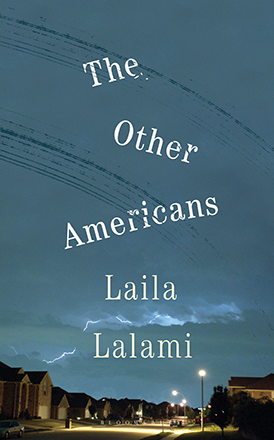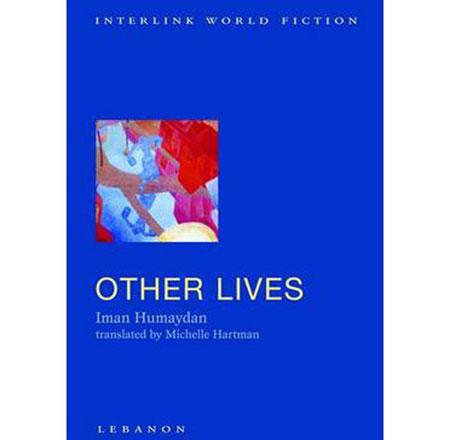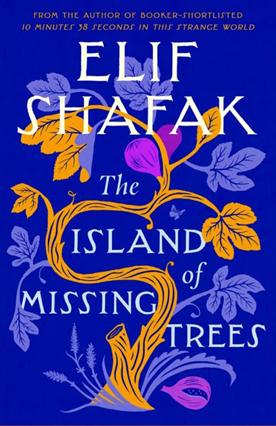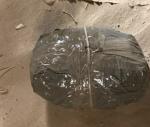You are here
Nine sides to the story
By Sally Bland - May 03,2020 - Last updated at May 03,2020

The Other Americans
Laila Lalami
London: Bloomsbury, 2019
Pp. 301
Combining elements of a murder mystery, family saga and immigrant literature, Moroccan American writer Laila Lalami spins a fascinating tale that delivers incisive commentary on the effects of war and racism that continue to plague American society. “The Other Americans” is also a love story. Whether the two (relatively) young lovers can stay together is no less suspenseful than whether the mystery surrounding a freak car accident will be solved.
Other features make this novel stand out as well. Lalami chooses an off-the-beaten-track setting: Joshua Tree, California, seemingly an isolated town in the Mojave Desert, but one which is seasonally invaded by tourists visiting the adjacent national park and its unique cacti. The local community is itself a mixed bag, ranging from old-timers (read: whites) still caught in the paradigms of the past, to immigrants like the Guerraoui family, who are still considered outsiders by some, despite having run a successful business in the town for decades. The fact that the story is told by nine different characters adds even more nuances and inserts the role of memory as a major factor.
It all starts the night Driss Guerraoui is killed in a hit-and-run accident after closing his diner and walking across a poorly lighted intersection to get to his car. Immediately, Nora, his younger daughter, drives from Oakland to Joshua Tree, experiencing disbelief that her father is dead, then guilt, then a burning conviction that his death was not an accident. He was the parent she was closer to, the one who always supported her, even when she ditched her medical studies in order to study music and be a composer — a choice ridiculed by her mother, Mariam, and older sister, Salma, who had married and become a dentist. Vividly recalling how Driss’s donut shop had been set afire after 9/11, the arsonist never identified, Nora fights to have his death thoroughly investigated. This means staying on in Joshua Tree, whose confines she had wanted to escape. Nora’s decision leads her to discovering unwelcome secrets and unexpected parallels between her own life and that of her parents.
Nora finds an ally in Jeremy, a member of the jazz band she had played with at school. Now he is a police officer whose life had also been turned upside down by the death of a parent. Yet, standing between them is his past as a Marine in the Iraq war. In Nora’s eyes: “The long fingers that had once gracefully stretched across guitar strings to play an F sharp had held an automatic rifle and pointed it at people in another country, a country that had done no harm to his”. (p. 94)
The chapters narrated by these two are the most compelling, as Jeremy agonises over the horrors he experienced in Iraq, and Nora recounts her childhood and the ways she was singled out as a foreigner despite having been born in the US. Her eggplant dish brought to school was described as looking like “poop” by a classmate, while teachers never learned to say her last name or to recognise her extraordinary abilities. They said she had her head in the clouds. “The idiom rang like an echo in my life”, made worse by the fact that her mother and sister concurred in this assessment. (p. 17)
Other characters speak as well, most of them embroiled in conflicts with loved ones or themselves. Efrain, the only eyewitness to the accident, fears coming forward since he is undocumented. Driss speaks, recalling how he and his wife Mariam had left Morocco to escape the police’s violent suppression of student protests. A clever, sympathetic, African American police detective, Coleman, tells of her difficulties adjusting to her family’s recent move from Washington DC, to the small, closed community in Joshua Tree. Mariam, who had had the idea to immigrate in the first place, now sees the drawbacks of America, particularly the fragmentation of her family: “We were like a thrift-store tea set, there was always one piece missing”. (p. 80)
Also given a voice are Anderson Baker, who owns the bowling alley next to Driss’s diner, and his son, the high school bully who had once written “raghead” on Nora’s locker, their narratives expressing sentiments one associates with Trump supporters. Salma, ostensibly the sister who had done everything right, also has her own problems.
What makes “The Other Americans” especially engrossing is that these voices come from full-blown characters, people with lives and minds of their own. One learns about their families, their childhoods, their jobs, their disappointments, and their hopes and dreams, giving the novel multiple subplots that eventually intertwine. Everything is painted in specific details, making the story more real, and most of the characters grow in the course of the novel.
As much as the problems of immigrants and their offspring are on display, so too are issues faced by “ordinary” Americans. In highly original prose and metaphor, Lalami provides new insight into the meaning of family, home, belonging and love, the latter not being an unchanging, ideal state of being, but something worth working on.
“The Other Americans” is available at Readers Bookshop.
Related Articles
The Moor’s AccountLaila LalamiNew York: Vintage Books, 2015Pp.
Returning to her native country, Lebanon, after fifteen years spent in Australia and Kenya, gives Mariam final proof of her state of displacement and transience — always being on the verge of leaving (symbolised by thirteen suitcases kept on the ready in her Mombasa home).
The Island of Missing TreesElif ShafakUK: Viking/Penguin Random House, 2021Pp.

















